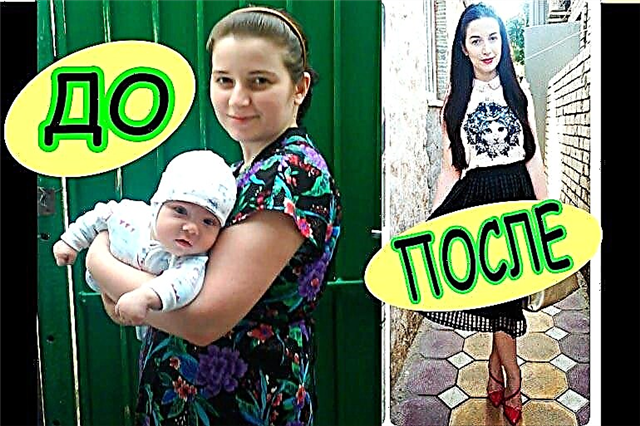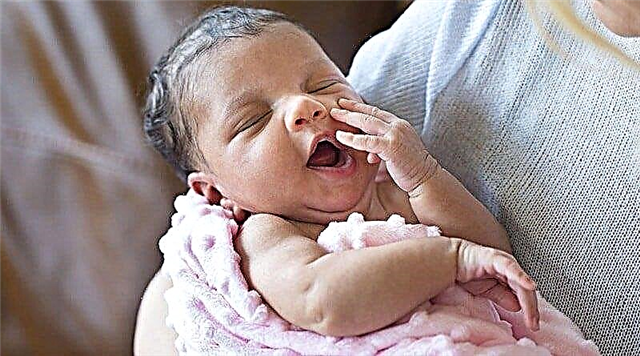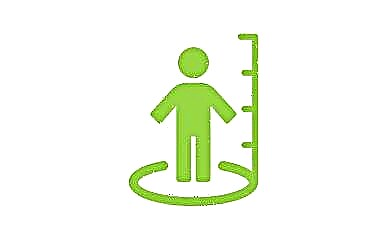
Heatstroke is especially dangerous for young children and the elderly. They develop overheating and hypothermia much faster. However, not all parents know how to identify the problem. After reading this article, you will find out what the symptoms and treatment of heatstroke in a child are.

What it is?
The term "heatstroke" refers to a condition that has become the result of excessive overheating of the whole body and the brain in particular. In this case, the body loses the ability to maintain its own normal temperature. Lack of adequate thermoregulation leads to a variety of disorders, many of which pose a serious danger to the child.
Hyperthermia (overheating) causes disruption of the activity of organs and systems.

In childhood, the center of thermoregulation, which is located in the brain, is not yet mature enough, it is difficult for a baby to cope with a high temperature. This age-related feature complicates his condition when overheating. If a child has chronic diseases, congenital pathologies, then heatstroke is a mortal danger.
Do not assume that only sun damage is called heatstroke, which children can get if they are too long under the open rays of the sun. Heatstroke can also be obtained in cloudy weather, and not only outdoors, but also under a roof - for example, in a bathhouse, in a sauna.


Causes
There are only two reasons why heatstroke develops:
- exposure to high temperatures from the outside;
- inability to quickly adapt and compensate for excessive overheating.
Many things affect the likelihood of developing such a condition. - the age of the child (the younger the crumb, the more likely it is to hit), the preliminary intake of medications (antibiotics, immunostimulants or immunosuppressants, as well as hormonal agents), a tendency to allergies and even an increased sensitivity to weather changes, which, by the way, is observed in most babies.
The most detrimental heat exposure affects children with diabetes, heart and vascular diseases, including those with congenital malformations, children suffering from bronchial asthma, children with mental illness and diseases of the nervous system, very thin children and overweight toddlers, and also on children with hepatitis.
The most dangerous age in terms of the development of severe heatstroke is 1-2-3 years.


Among the additional negative factors that in every possible way contribute to the occurrence of pathology are closed clothes that create the effect of a greenhouse, increased air humidity, dehydration in a child. Heatstroke is especially dangerous, which occurs when several unfavorable circumstances coincide - for example, in a small child whom his parents took to rest in an exotic country, because. Complex biological processes of acclimatization are added to age. In combination with the heat, the effect will not be long in coming, and such a baby may well end up in intensive care.
Many parents confuse sunstroke and heatstroke. Having provided the child with a panama hat and an umbrella from the sun, they believe that he is reliably insured against overheating. Such a toddler is really protected from sunstroke, but it may well get heat in a panama hat and under an umbrella in the shade - if it stays in the heat for too long.

The center of thermoregulation is located in the diencephalon of the brain. When it overheats, it "malfunctions" and the body cannot efficiently and quickly get rid of excess heat. Usually this physiological process occurs with perspiration. In response to the heat, the thermoregulatory center sends a signal to the sweat glands of the skin, which begin to actively produce sweat. Sweat evaporates from the surface of the skin and cools the body.
With heatstroke in a child, the signal from the brain about the need to produce sweat passes with a delay, the production of sweat is insufficient, and the children's sweat ducts are narrow due to age, which also makes it difficult to sweat (in the right amount and at the right speed).

Now imagine that with all this, the child is wearing synthetic clothing that makes it difficult to evaporate, and does not consume enough liquid. Too humid air (for example, in the tropics or in a bath) does not contribute to evaporation at all. Sweat is released, flows down in streams, but there is no relief, the body does not cool down.
Heatstroke can be caused by increased physical activity in the heat - outdoor games on the beach, for example. Children with light skin and blue eyes are the hardest to suffer from heatstroke. They overheat faster and release excess heat more slowly.


A critical temperature is considered a temperature above 30 degrees Celsius, for newborns - above 25 degrees Celsius.
Symptoms and Signs
There are four clinical forms of heatstroke:
- Asphyxia. All symptoms are associated with impaired respiratory function, up to the development of respiratory failure.
- Hyperthermic. With this form, a high temperature is observed, the thermometer rises above 39.5-41.0 degrees.
- Cerebral. With this form of heatstroke, various disorders of the child's nervous activity are observed - delirium, convulsions, tics, and so on.
- Gastroenteric. The manifestations of this form are usually limited to gastrointestinal disturbances - vomiting, diarrhea.


You can recognize characteristic signs of general hyperthermia in a child by the following symptoms:
- Redness of the skin. If, when exposed to the rays of the sun, the erythema zone is limited to the zone of exposure, then with a general heat stroke, erythema is continuous - absolutely all skin covers redden.
- Difficulty breathing, shortness of breath. Such signs develop with any type of general temperature injury. Frequent shortness of breath in this case is the body's attempts to cool down through the lungs.
- General weakness, apathy. The child looks tired, sleepy, he tends to lie down, ceases to show interest in what is happening.

- Nausea and vomiting. These symptoms are more characteristic of the gastroenteric form, but other types of heat strokes can also accompany.
- Dizziness. It can be insignificant, or it can be expressed quite clearly, up to episodes of loss of balance.
- Hallucinations. Visual hallucinations accompany almost all types of heatstroke. Usually they manifest themselves in the subjective perception of non-existent points in front of the eyes, the so-called flies. Young children in response to this may begin to wave their arms, trying to "drive away" them.
- Rapid and weak pulse. It exceeds normal values by about one and a half times, it is difficult to palpate.


- Dry skin. The skin feels rough, dry and hot to the touch.
- Cramps and muscle pain. The seizures can only affect the limbs, but can be spread to the whole body. More often, convulsive syndrome is in the nature of trembling of the arms and legs.
- Sleep and appetite disorders. Both parameters can be violated to a certain extent, it can reach the complete refusal of the child from food, water and sleep.
- Incontinence. The inability to control urination and defecation is only apparent in severe heatstroke associated with loss of consciousness.

When symptoms characteristic of hyperthermia appear, parents should assess the severity of the condition.
With a mild form in a child, the skin always remains moist. A complex of symptoms is observed: headache, fever, lethargy, nausea and shortness of breath, as well as increased heart rate. But there is no loss of consciousness, there are no neurological manifestations.
With moderate severity, the temperature is high, the baby moves a little and reluctantly, and there may be short-term episodes of loss of consciousness. The headache increases, symptoms of intoxication appear - vomiting and diarrhea (or one thing). The skin is red and hot.

With a severe course, the child is delirious, loses consciousness, experiences convulsions, speech can be confused, there are hallucinations. The temperature is at 41.0, sometimes reaching 42.0 degrees. The skin is red, dry and very hot.
It is possible to distinguish heatstroke from sunstroke by a combination of clinical signs. After excessive exposure to the sun, only severe headache, nausea, the temperature rarely rises to 39.5 degrees.


Dangers and consequences
Heat injury for a child is dangerous primarily due to the state of dehydration. With extreme heat, fever and the manifestation of the gag reflex, it occurs very quickly. The younger the toddler, the more rapidly it loses its moisture reserves. This is a deadly condition.
High fever from heatstroke can trigger febrile seizures and other neurological disorders in a child. The most dangerous are severe degrees of impact, with which the forecasts are rather dubious.
Mild degrees of heatstroke usually have little or no consequence. Moderate and severe can lead to the development of renal failure, respiratory arrest, cardiac arrest, as well as long-term consequences, which are mainly expressed in serious neurological disorders. Sometimes they stay with the child for life.
Severe overheating of the brain can cause a wide range of disorders in all organs and systems.


First aid
If a child has signs of heatstroke, an ambulance should be called as soon as possible. While doctors are on call, it is the parents' task to provide emergency care correctly. The main direction is the cooling of the body. And here the main thing is not to overdo it.
The algorithm of actions is as follows:
- The child is placed in the shade, brought into a cool room, safely sheltered from sunlight. If the blow happened after the bath, they take it out into the street.
- All tight and tight clothing is removed. They unbutton their trousers, remove the belts.
- The child should be laid on his back if there is no nausea, or on his side if there is nausea and vomiting. The baby's legs are slightly raised by placing a towel or any other object folded under them with a roller.
- Cold compresses are applied to the forehead, back of the head, hands, and feet. Pieces of cloth, towels soaked in cold water will do. However, in no case should ice be used, since excessive cooling can cause vascular collapse.

- Open all windows if the child is indoors so that there is no shortage of fresh air.
- While waiting for the doctor, you can pour cool water on the body (the temperature of the liquid is from 18 to 20 degrees, no less). If it is possible to fill the bathtub with water of this temperature, you should do this and immerse the child in the water, leaving only the head above the water surface.
- In case of attacks of loss of consciousness, the child is allowed to smell ammonia.


- In case of convulsions, they do not hold the child's body, do not straighten the contracted muscles, this is fraught with fractures. You can't unclench your teeth and shove an iron spoon into your baby's mouth - you can break your teeth, the fragments of which can get into the respiratory tract.
- In all cases (with the exception of loss of consciousness and seizures), the child is given a plentiful warm drink. After fainting, sweet, weak tea is also given. It is forbidden to give strong tea to a child, as this can negatively affect the heart.
- In the absence of breathing and heartbeat, emergency artificial respiration and chest compressions are performed.
- You should not give your child any medication before the arrival of the medical team. In the presence of seizures and episodes of loss of consciousness, it is imperative to record the time of the beginning and end of the attacks in order to communicate this information to the visiting doctor.


Treatment
With a mild degree of heatstroke, the child will remain at home for treatment.
Moderate and severe conditions require hospitalization.
The first medical aid, of course, will be provided on the spot. If necessary, the child will be given a heart massage, artificial respiration, and drugs to normalize cardiac activity. But the rest will be done by the doctors of the children's hospital.
Usually, intensive rehydration therapy is performed on the first day. A large amount of saline with minerals necessary for the normal functioning of the heart and nervous system is injected intravenously. When the risk of dehydration recedes, the child is examined by all specialists, first of all - a cardiologist, neurologist, pediatrician. If pathologies caused by hyperthermia are detected, appropriate treatment will be prescribed.

The high temperature after heatstroke usually lasts for several days. All this time, the child is recommended to take paracetamol-based antipyretics.
A mild degree of heatstroke should be treated at home, taking into account the same requirements. Reduce the temperature, if it rises to high values, give the child water solutions for oral rehydration - "Smekta", "Regidron".


When the first signs of dehydration appear, one should not hesitate with hospitalization, since it is not for the faint of heart to get the child out of this state at home. Attempts to do this on your own can end very badly.
At home, the baby can be wrapped in a damp, cool diaper several times a day; for an older baby, you can provide a cool bath or shower. It is a big mistake for parents to turn on fans or air conditioners while wet wrapping. Very often, this "treatment" ends with the development of pneumonia.
During home treatment, it is important to give the child as much liquid as possible, all food should be light, quickly absorbed. You need to feed the child only when it asks about it. It is better to give preference to vegetable soups with lean broth, jelly, fruit drinks, cereals without butter, fruit and vegetable salads.
The diet should be followed until all symptoms disappear completely and the gastrointestinal tract normalizes.


Prevention
The prudence of the parents and their observance of simple safety rules will help protect the child from heatstroke:
- If you plan to relax on the beach, long walks in the hot season, you should make sure that the child has clothes made from natural fabrics, in which the baby's skin can freely "breathe" and evaporate sweat. It is best to opt for light colored clothing as it reflects sunlight and reduces the chance of overheating.
- When on the beach, for a walk, in the bath, the child's head should always be covered with a light-colored Panama hat or a special bath cap.


- You should not walk or sunbathe for a long time after 11 am and until 4 pm. Before and after this time, you can sunbathe and walk, but with restrictions. A child (especially a newborn or nursing baby) should not be exposed to the sun, even during "safe" hours.
- If the child is small, then it is better to refuse active beach activities (trampoline, banana riding, beach ball game).
- Parents who do not see anything wrong with a joint vacation with their baby on the beach should remember that the baby should never spend his lunchtime there, even if he is lying under an umbrella in the shade.This increases the likelihood of heatstroke tenfold.
- In the hot season, as well as when visiting a bath or sauna, be sure to give your child plenty of fluids. Carbonated drinks are not suitable for this purpose. It is better to use boiled and pre-chilled compote, fruit drink, ordinary drinking water.

- Never leave your child in a closed car in a parking lot near a store or other institution during the hot season. At a temperature of about 25 degrees Celsius, the car interior overheats in 15 minutes. At the same time, the temperature inside the cabin is significantly higher than the outside thermometer. Very often such stories end with the death of babies.
- You should not feed the baby tightly and abundantly in the heat. Moreover, you should avoid fatty foods. It is better to give light fruits and vegetables, thin soups during the day.
It is better to postpone a solid meal until the evening, when it becomes cool. You should not take your child out for a walk immediately after eating. If it's hot outside, then you can go for a walk only an hour and a half after lunch or breakfast.
Doctor Komarovsky will tell you how to protect a child from heatstroke in the next video.



